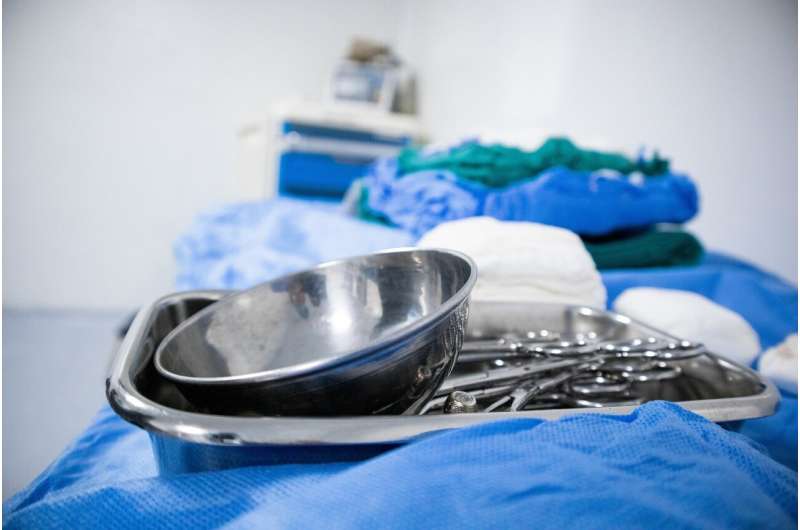Research Shows Pitchers Have Thicker UCL Ligaments in the Elbow, Heightening Injury Risks

A recent study found that pitchers in college have thicker ulnar collateral ligaments in their elbows, increasing injury risks. Higher elbow torque and throw volume contribute to ligament changes, informing prevention strategies.
Every baseball season, players at all levels, from youth leagues to professional ranks, face the risk of elbow injuries involving the ulnar collateral ligament (UCL). A recent study led by researchers from the University of Kansas employed advanced ultrasound technology to measure UCL thickness among collegiate baseball players. The findings revealed that pitchers tend to have thicker UCLs compared to non-pitchers, likely due to the higher volume and intensity of throws they execute.
Participants in the study included 22 NCAA Division I players, with ultrasound scans and elbow torque measurements taken during preseason training. Players wore sleeves embedded with accelerometers to quantify elbow stress during their pitching routines. Results confirmed that pitchers' UCLs were significantly thicker in their throwing arms versus their non-throwing arms, emphasizing the impact of repetitive, high-force throwing motions.
Interestingly, the research found no correlation between arm slot—the angle at which a player throws—and UCL thickness, challenging conventional wisdom that certain arm angles pose higher injury risks. Instead, factors such as increased elbow torque, effort level during throws, and volume of throws were linked to greater UCL thickness, which may indicate a higher risk for injury.
The study's insights are valuable for coaches, trainers, and athletes aiming to develop better mechanics and conditioning programs to prevent UCL injuries. Understanding how high-stress throwing behaviors influence ligament health can inform strategies to minimize injury risks, including managing throw volume and effort levels.
UCL injuries are commonly treated with "Tommy John" surgery, especially in pitchers, but they are also experienced by positional players. Previous research indicated a relationship between UCL size and injury risk, and ultrasound technology now offers the potential to detect ligament changes before injuries occur.
Furthermore, the study dispelled myths about the influence of arm position on ligament thickness, showing that factors like height, weight, or even-handedness do not predict optimal arm slots for pitching. Instead, emphasis should be placed on managing throw effort and volume.
Authoritative voices like Quincy Johnson from KU highlight the importance of ongoing research into injury prevention practices and biomechanics, advocating for data-driven approaches to safer sports participation. This research may help reduce the financial, physical, and career impacts associated with UCL injuries, ultimately promoting healthier athletic development.
For more detailed results, see the full study: Calvin Smith et al, "Influence of Throwing Kinematics on Ulnar Collateral Ligament Thickness in Collegiate Baseball Players," Orthopaedic Journal of Sports Medicine (2025).
Stay Updated with Mia's Feed
Get the latest health & wellness insights delivered straight to your inbox.
Related Articles
Acalculia: Understanding How Brain Damage Impairs Number Processing in Stroke Survivors
Acalculia is a neurological disorder affecting number processing, common in stroke survivors, leading to significant challenges in daily life. Raising awareness and improving diagnosis are crucial for better support and recovery.
Safety and Effectiveness of GLP-1 Receptor Agonists for Obesity Treatment in Adults with Mental Illness
New evidence shows GLP-1 receptor agonists are safe and effective in promoting weight loss and improving metabolic health in adults with mental illness, with no increased risk of adverse psychiatric effects. These medications offer promising benefits for addressing obesity in this vulnerable population.
Preventing Postoperative Delirium: Low-Cost Strategies to Protect Brain Health
New research reveals that postoperative delirium, a common complication in older surgical patients, is preventable through simple, low-cost interventions that can improve outcomes and reduce healthcare costs.
Perception of Being Awake During Sleep Tied to Normal Brain Function, Not Just Insomnia
New research indicates that the perception of being awake during sleep is linked to normal brain activity, challenging traditional views on sleep and wake boundaries. Findings highlight the importance of brain function in sleep perception and potential treatments for insomnia.



